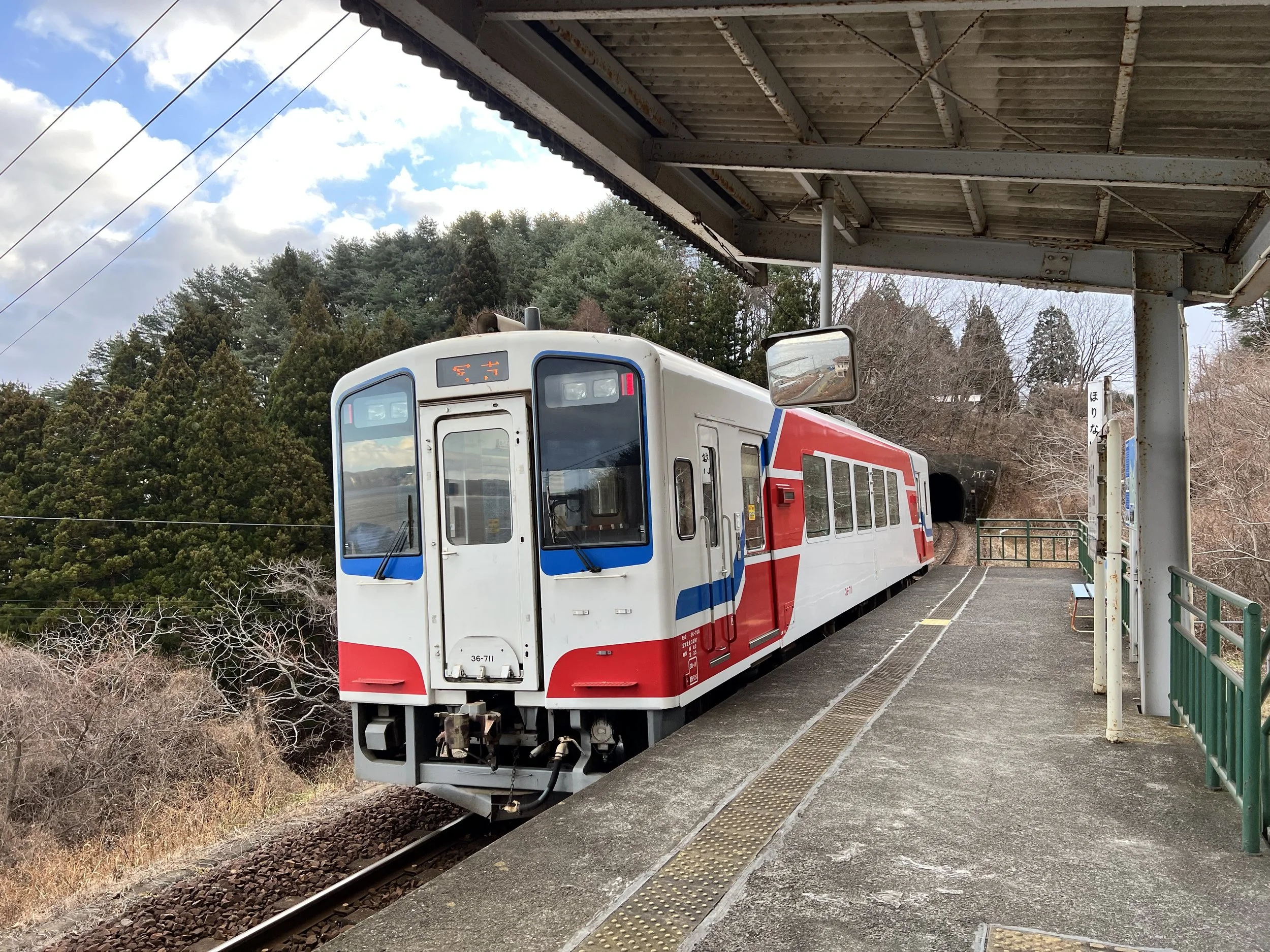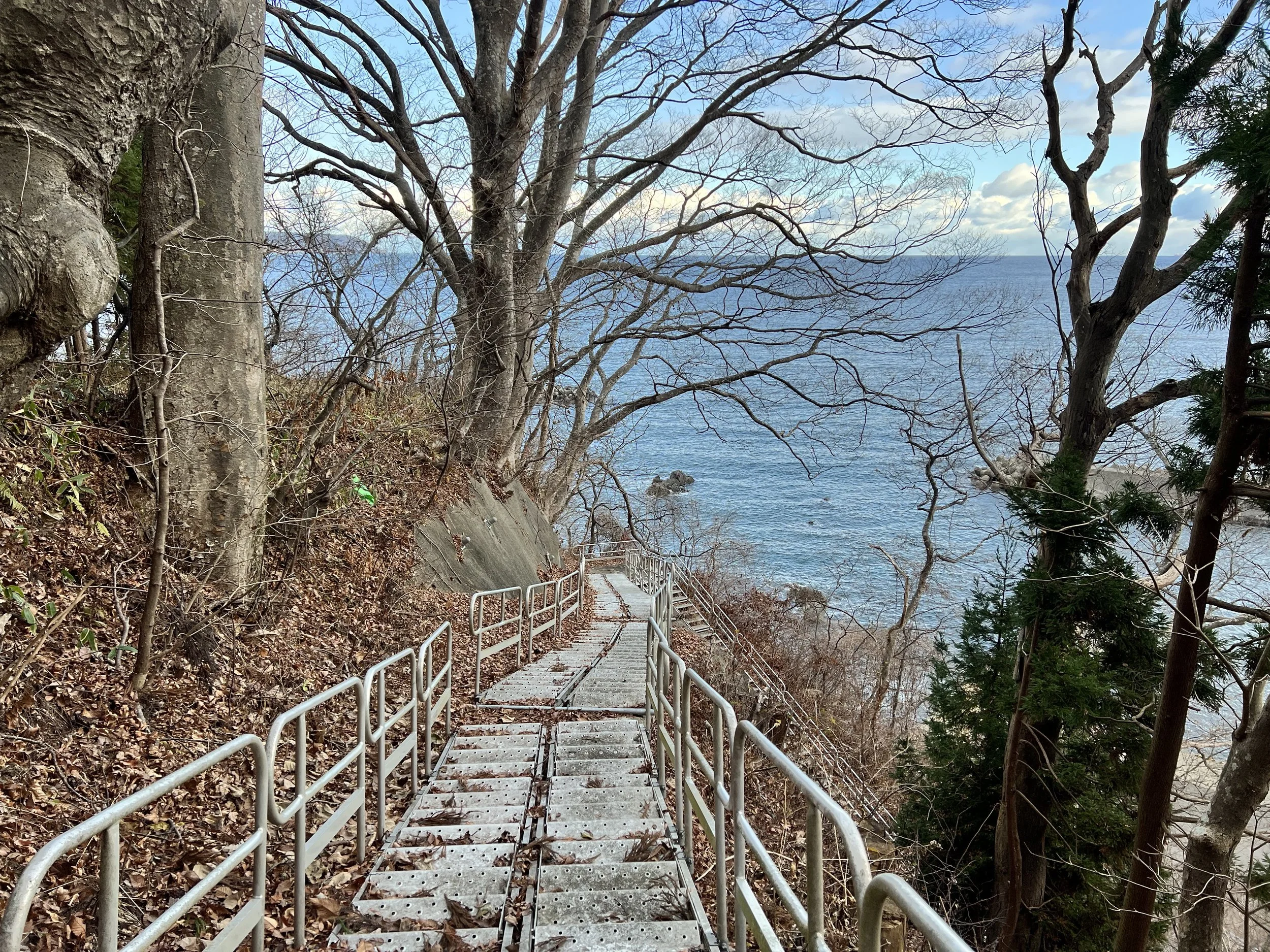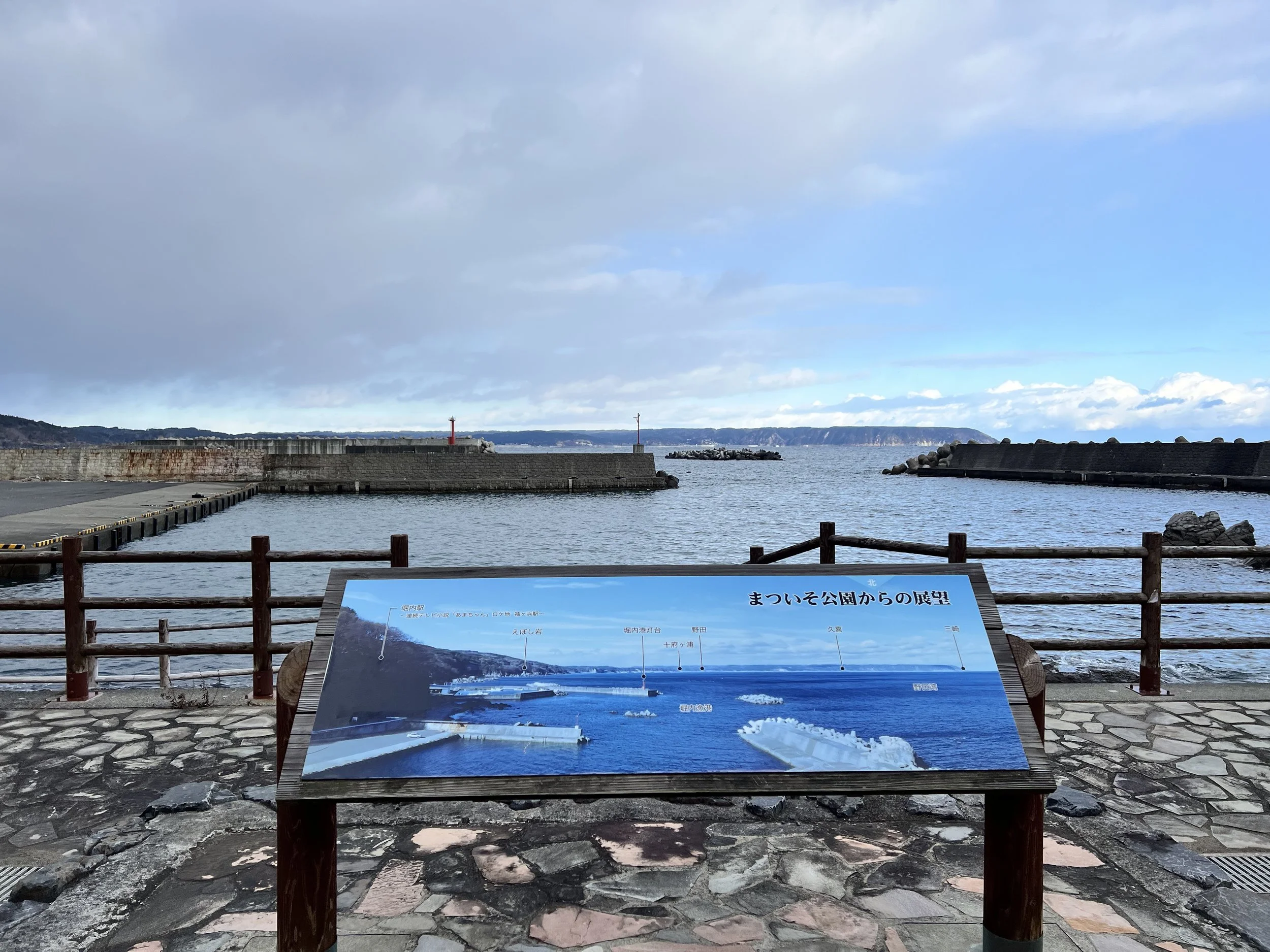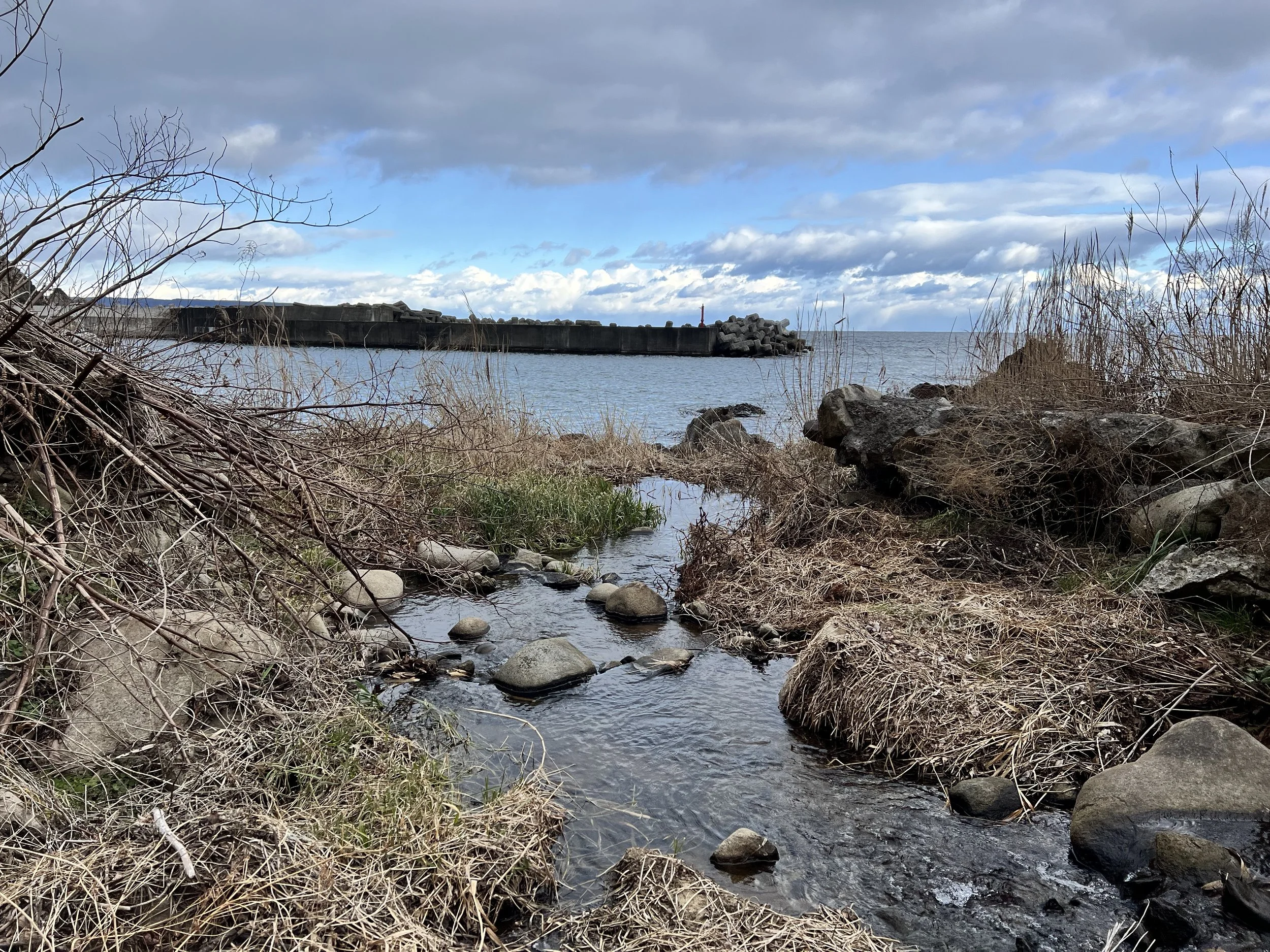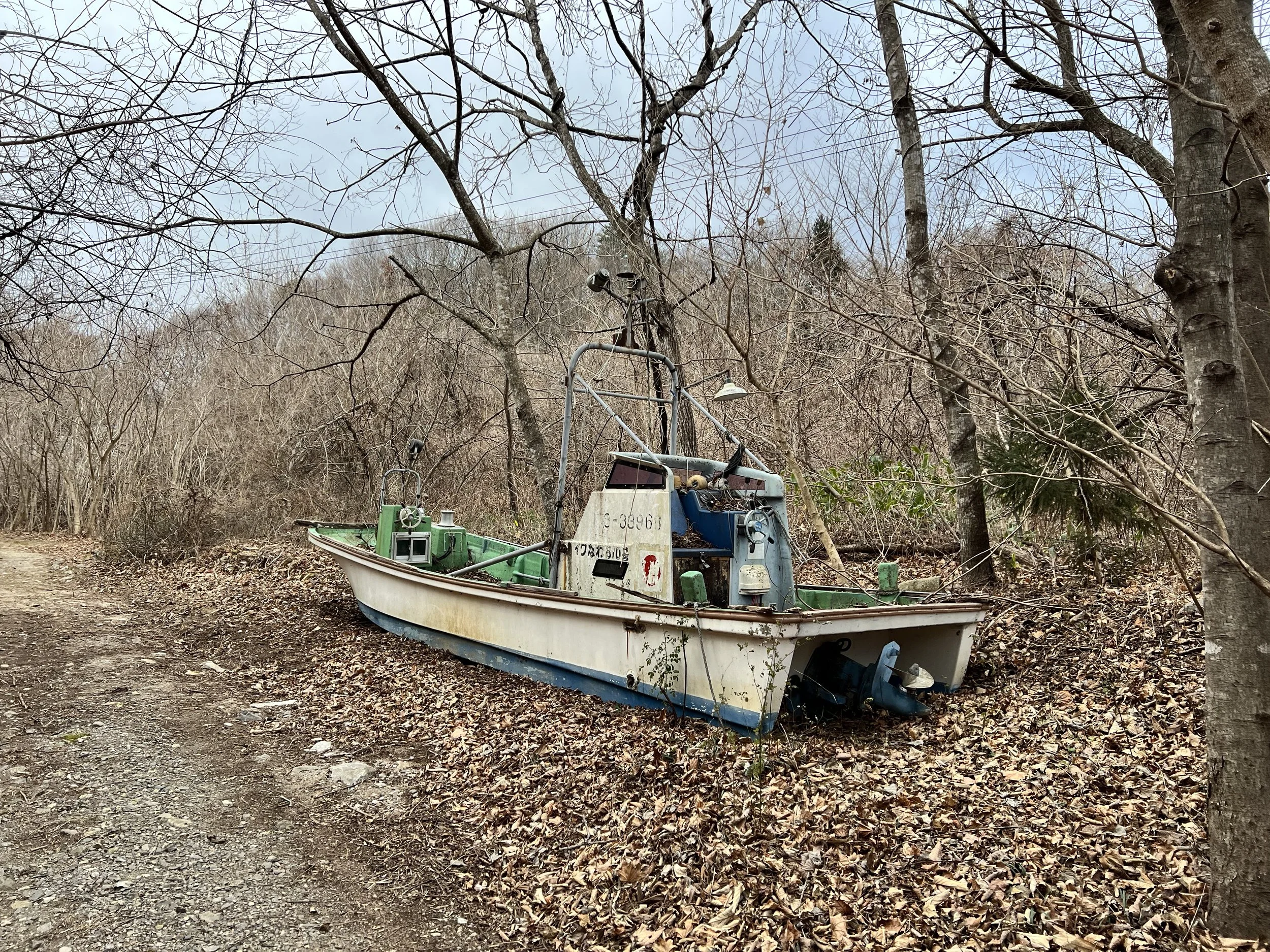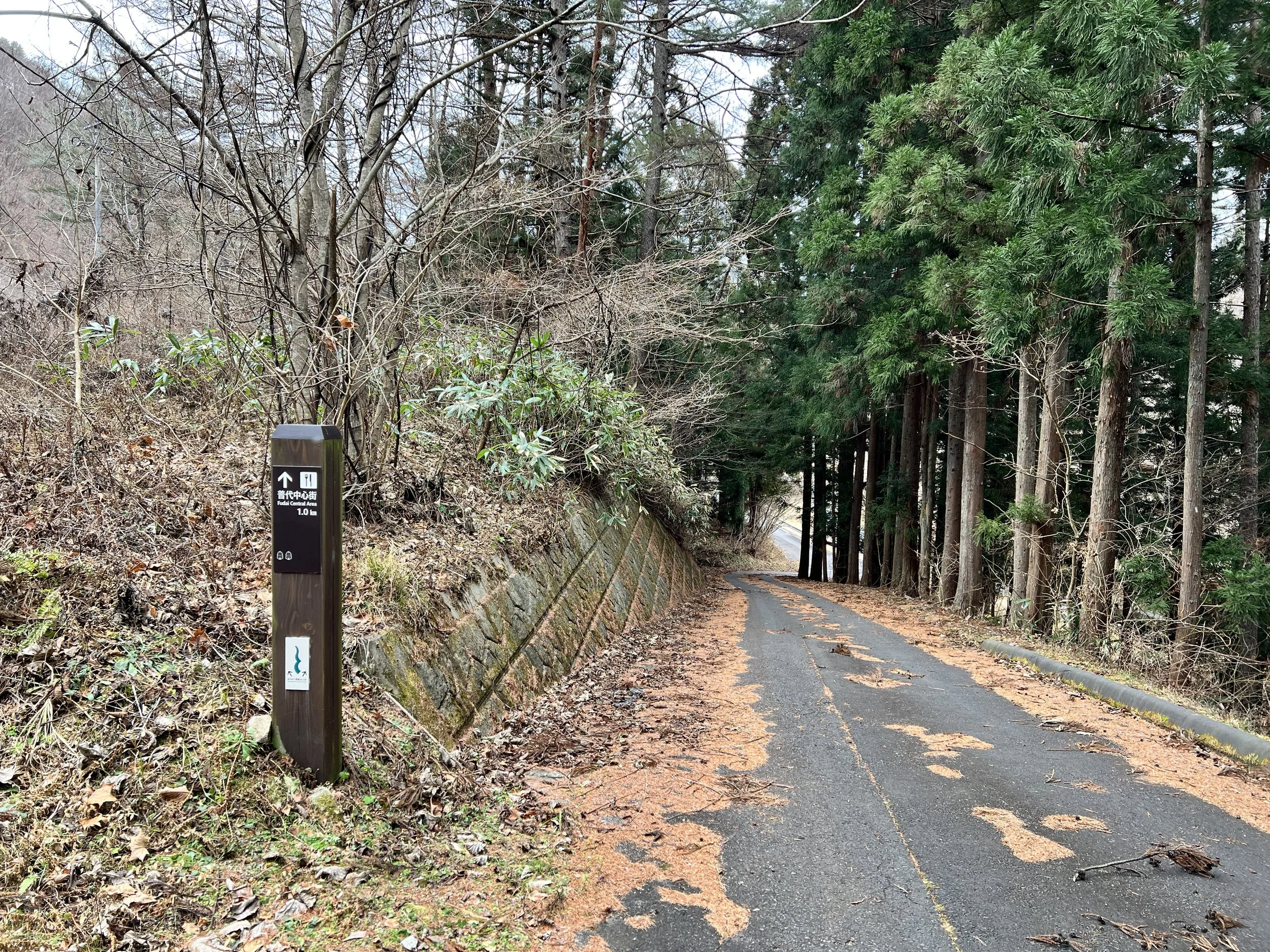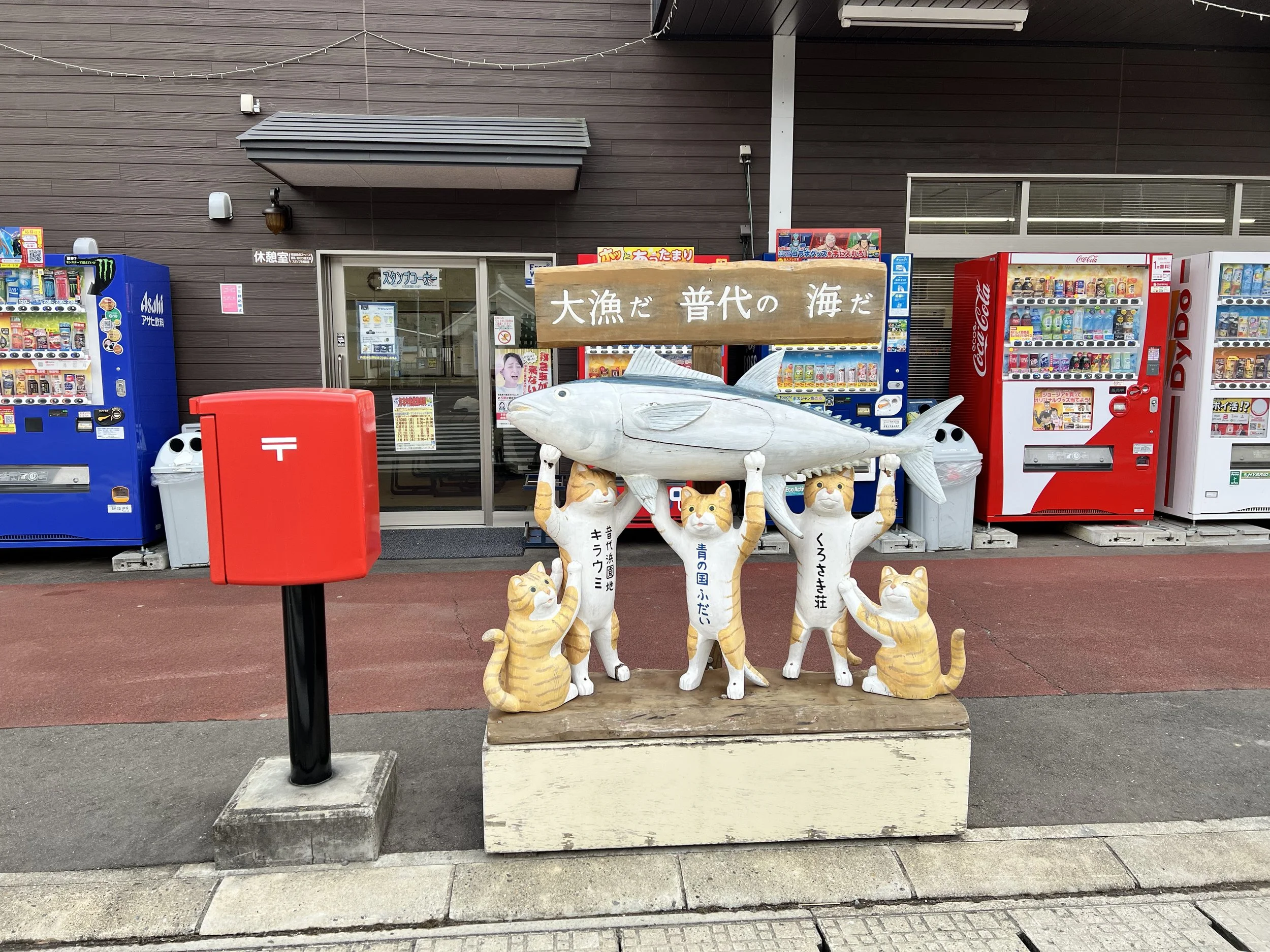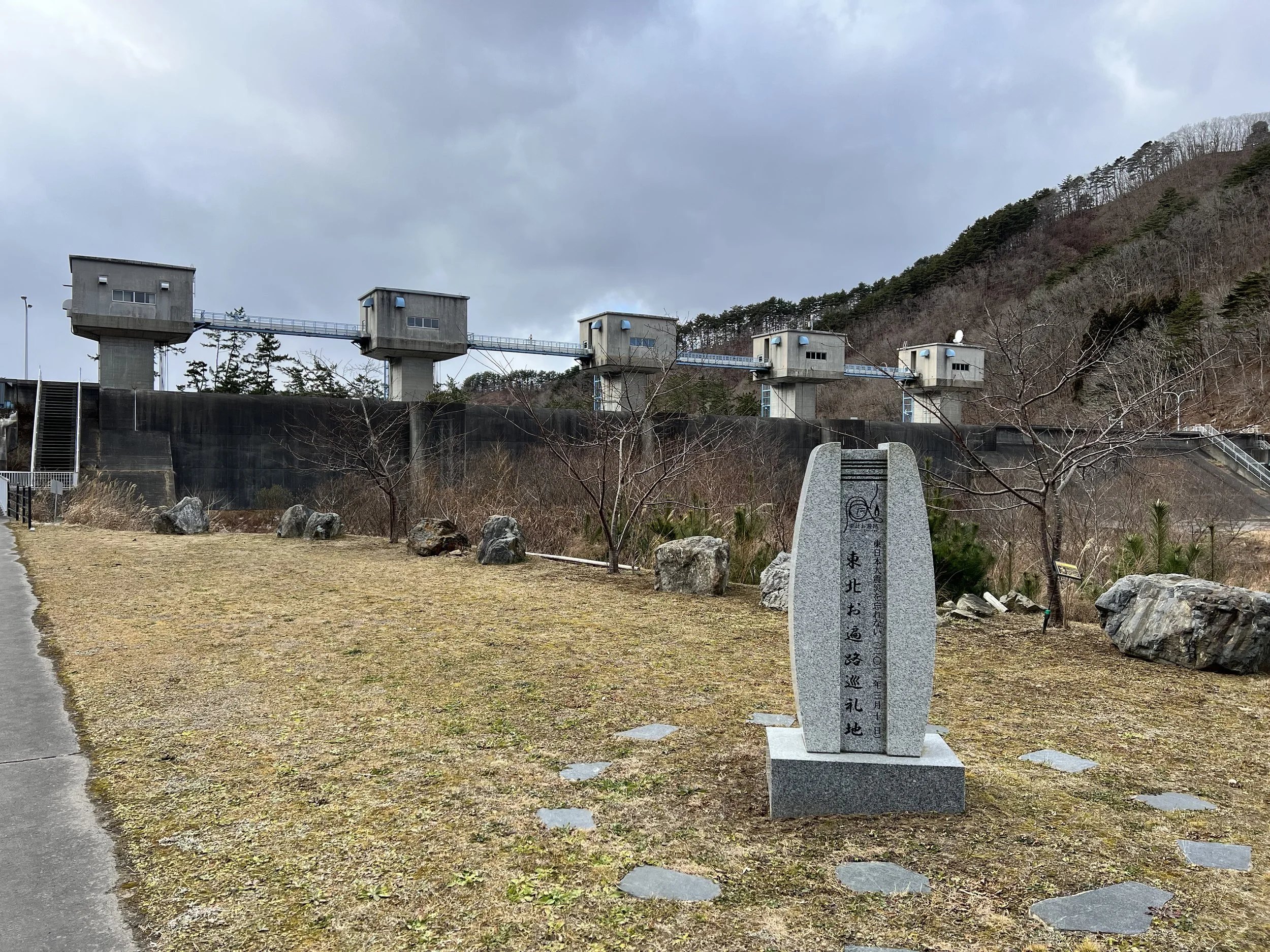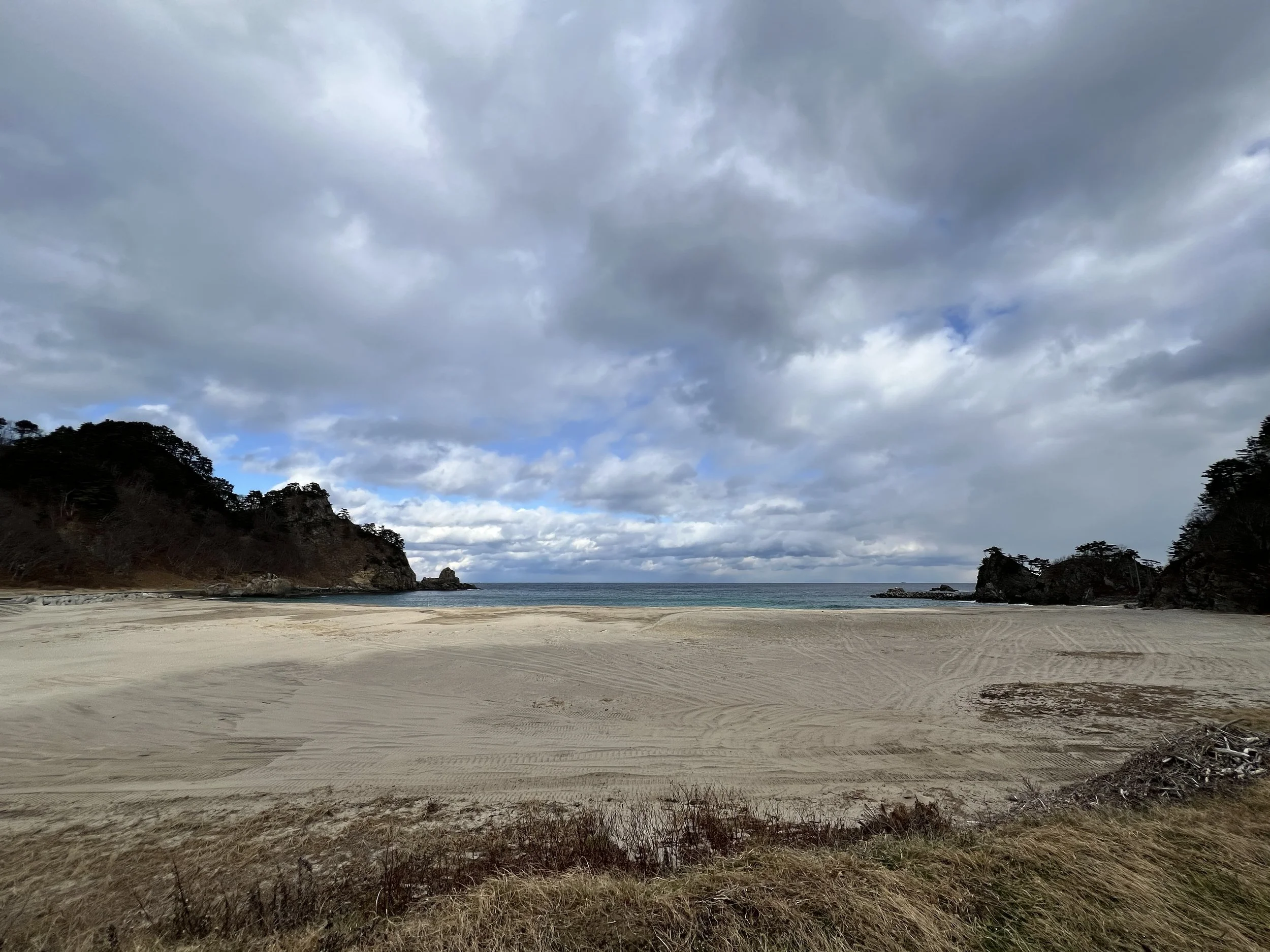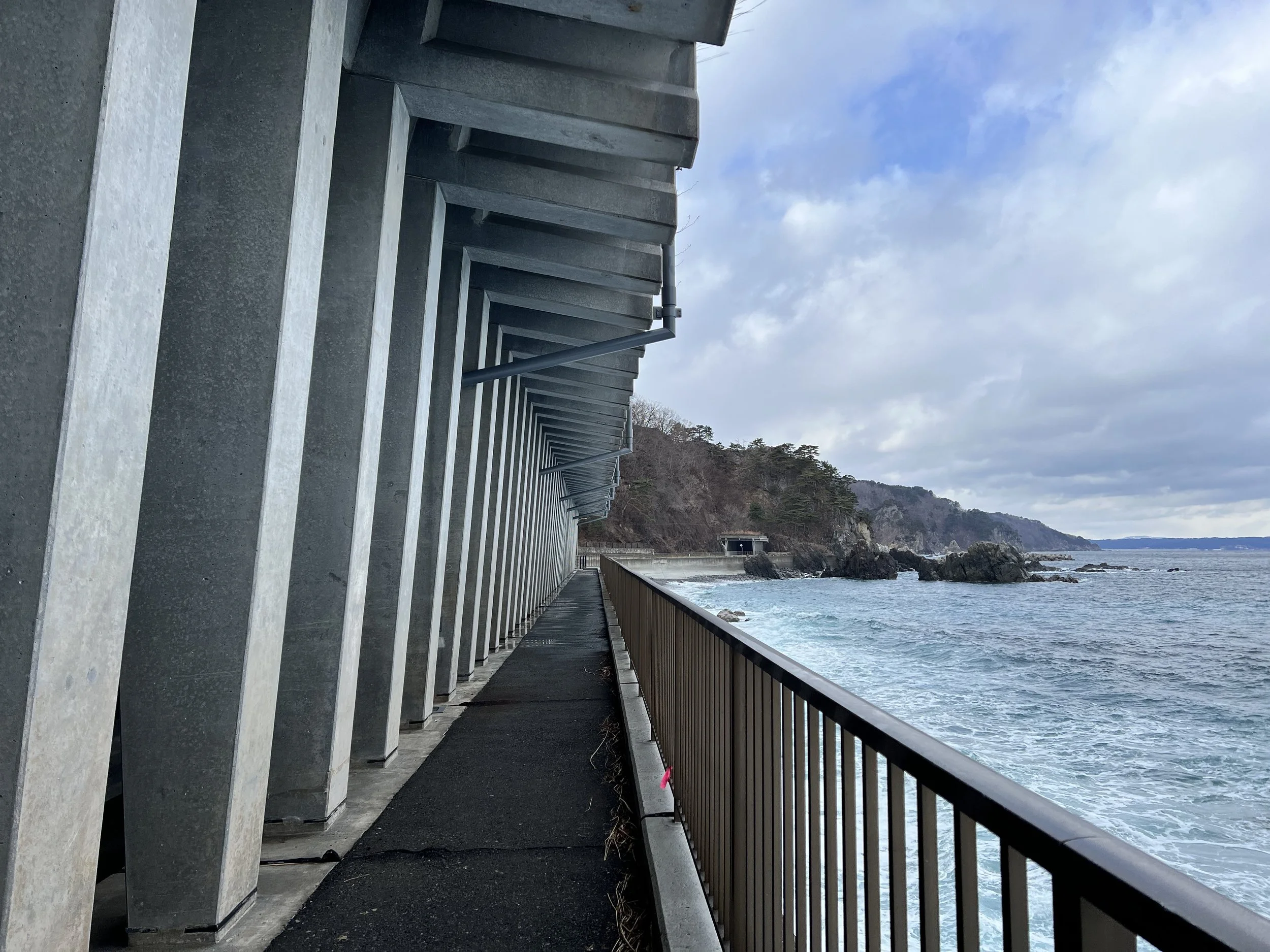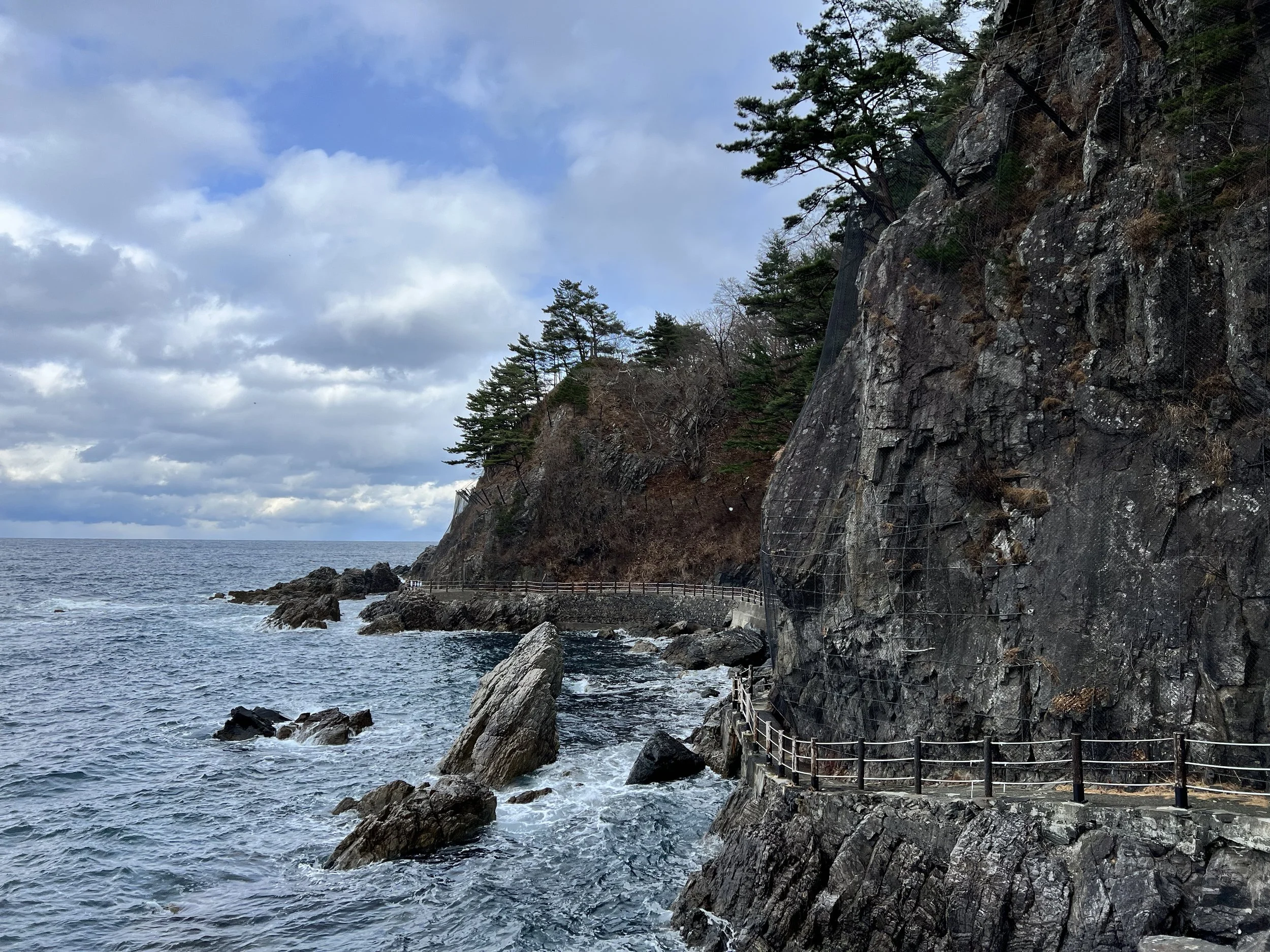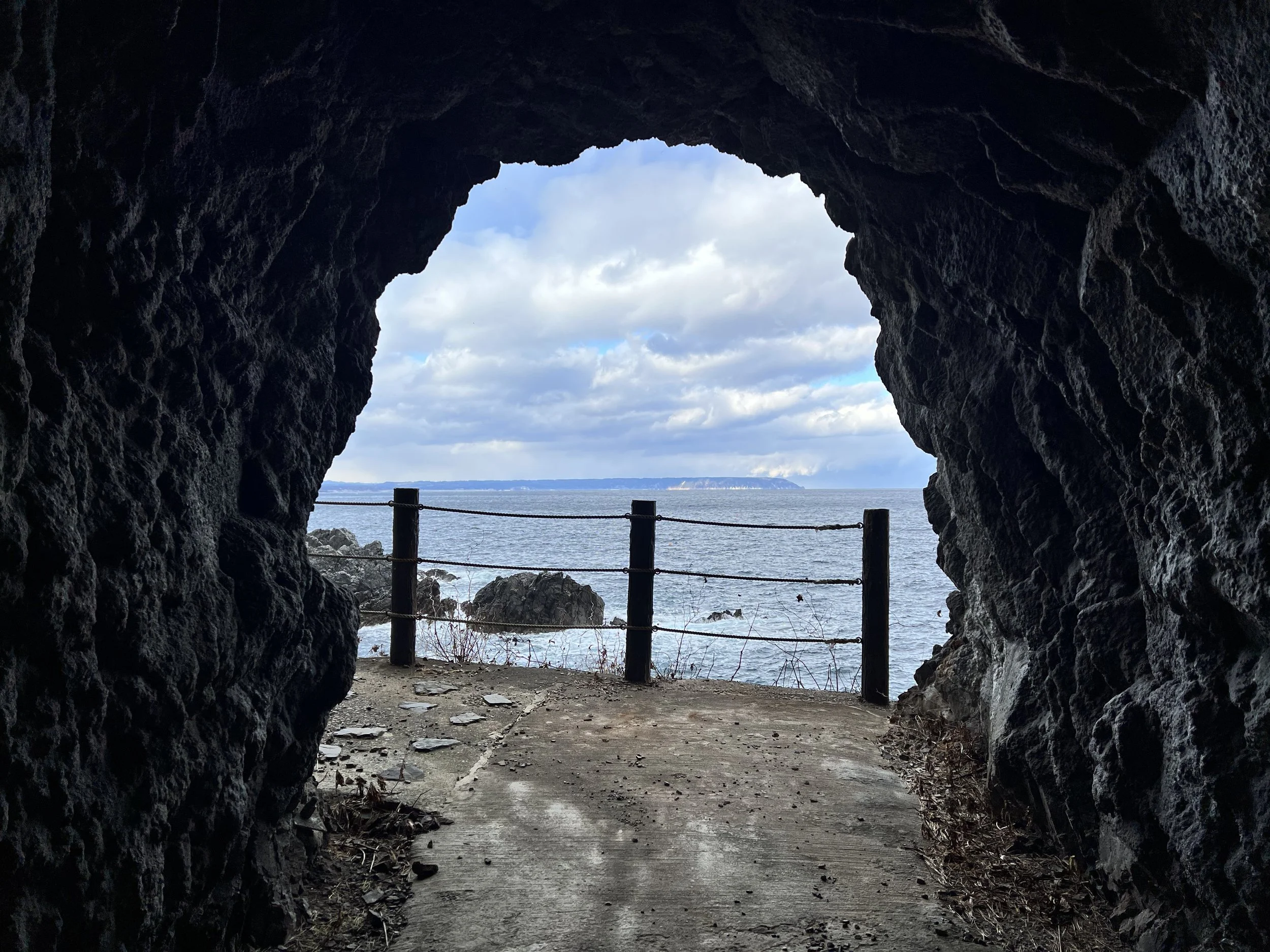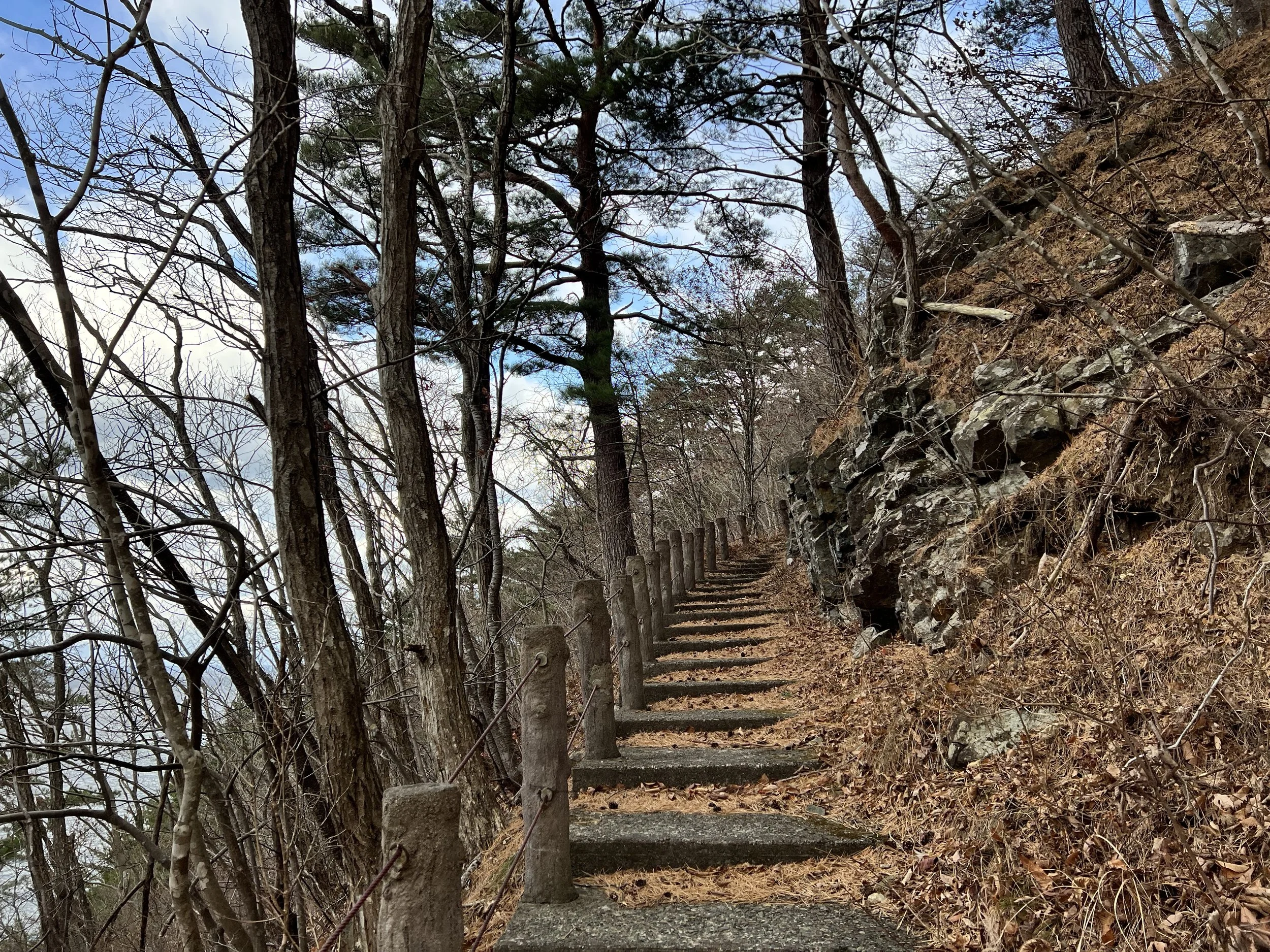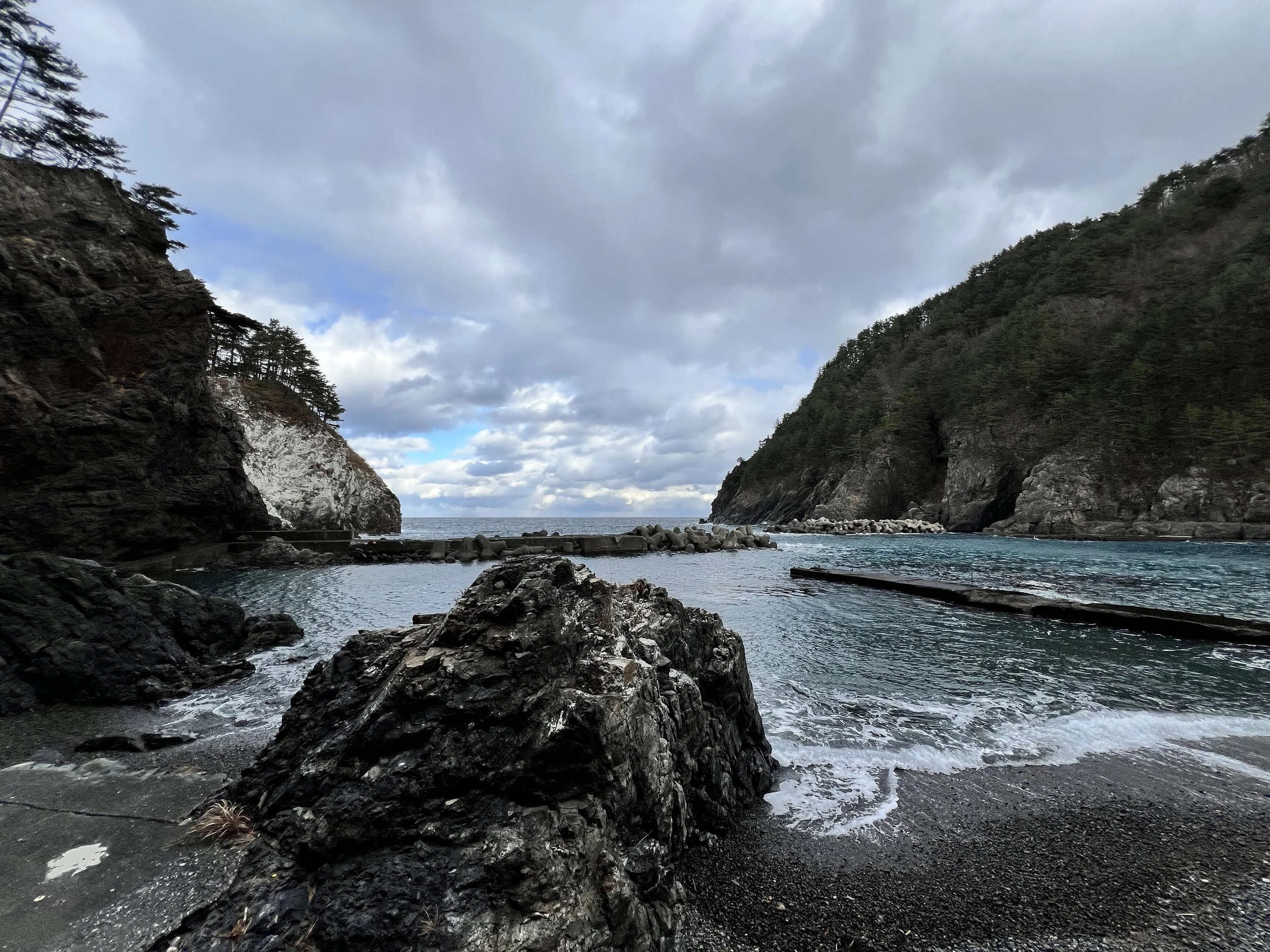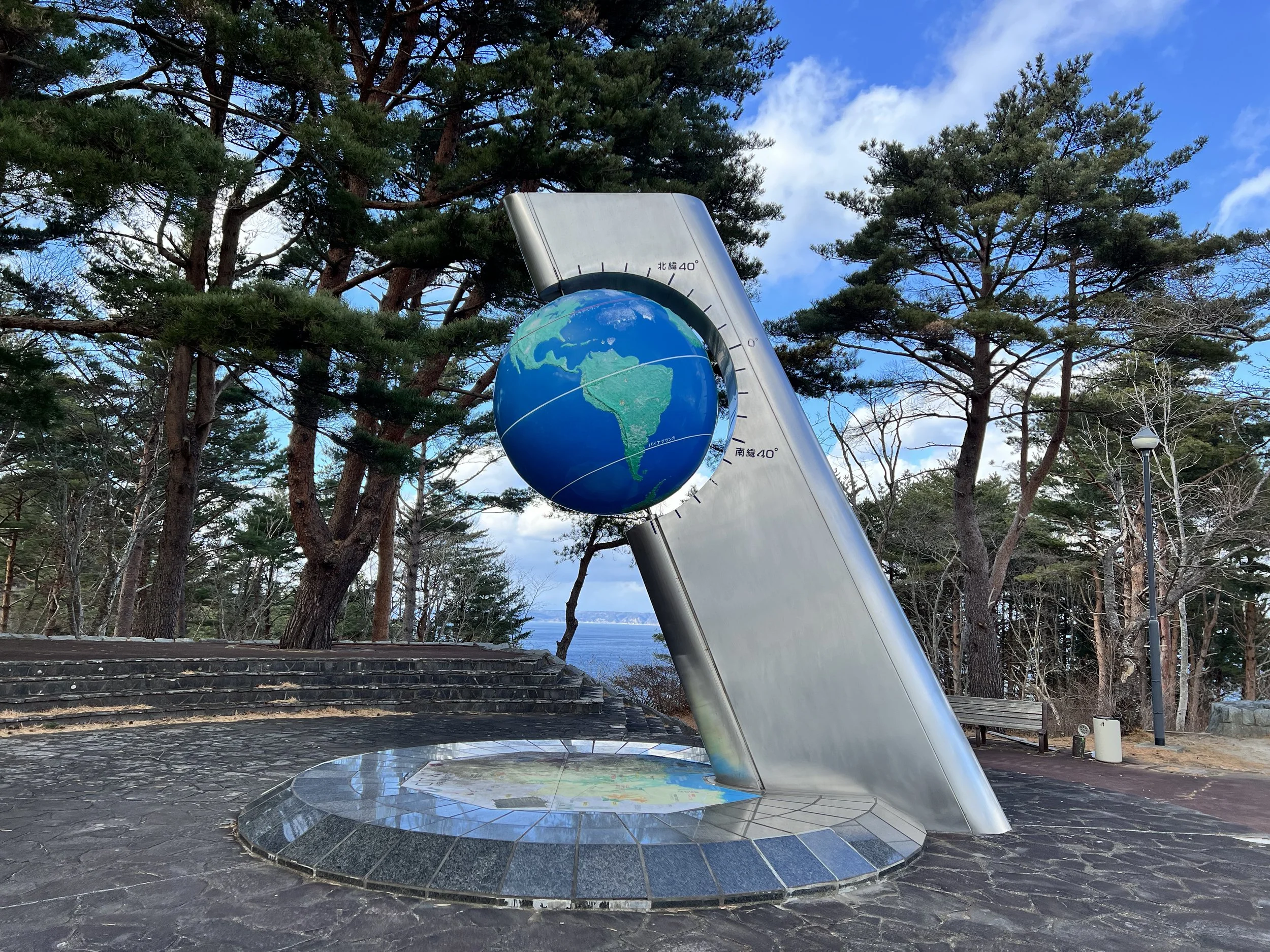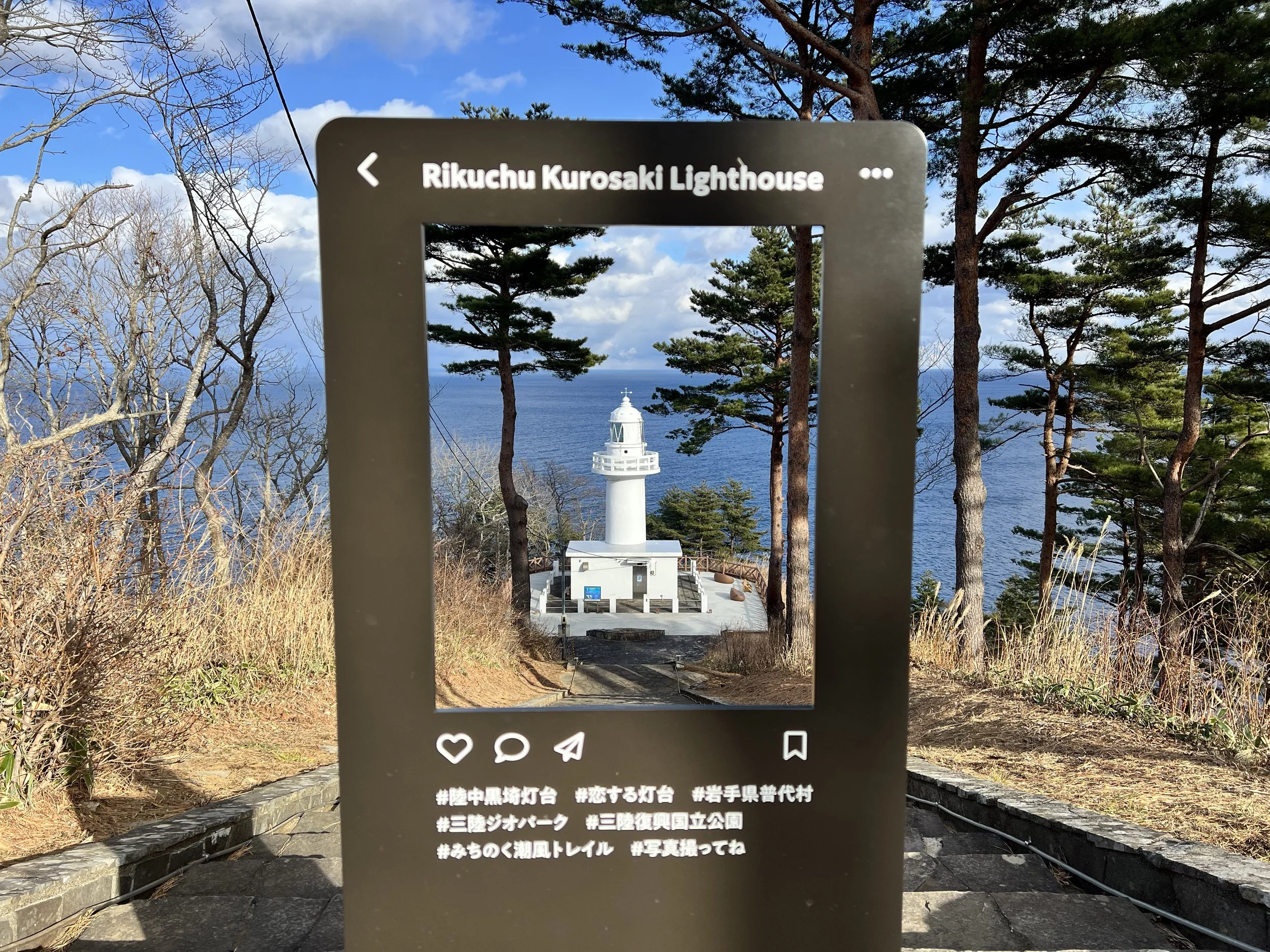Michinoku Coastal Trail - Horinai Station to Kurosakiso - Iwate, Japan
I took the early train from Kuji Station to Horinai Station on the one-man local train. As we followed the coastline, the conductor paused on a bridge just before Horinai Station to share how this area survived the 2011 tsunami and the ongoing rebuilding efforts. Many of the buildings are new, but some places are still quietly recovering.
After getting off the train, I followed the road for a short while to reach the trailhead. The markers here were easier to follow than in other sections. The route began with a steep steel staircase leading down to a fishing port before continuing along a forested coastal trail. Scattered along the hillside were small fishing boats—some left stranded by the tsunami, their hulls battered and overgrown.
The trail alternated between paved roads and quiet forest paths, weaving through small fishing towns. In one of them, an elderly woman waved as I passed by—a small gesture that made me smile. As I descended toward Fudai, I looked for a place to eat and found a small restaurant just about to open. The owner kindly let me in early so I could order lunch. Later, I passed a family pounding mochi outside their home in preparation for New Year’s—a heartwarming scene that showed how traditions endure, even in places forever changed.
Fudai Station sits next to a roadside rest stop with small shops and cafés. I wandered around, grabbed some snacks for now, and stocked up on bread for tomorrow’s hike since I wouldn’t be near a store. With only eight kilometres left, I rested here for a bit before continuing toward my accommodation for the night, Kurosakiso.
The final stretch followed the main road toward the Fudai Watergate. With barely any shoulder, I stayed alert for cars as I walked. The massive floodgate played a crucial role in protecting Fudai during the 2011 tsunami, and several memorial stones stand nearby. There’s also a campground (closed in winter) and a small shop selling dried fish from the local port.
As the road curved along the coast, waves occasionally crashed high enough to spray across the walkway, forcing me to time my steps carefully to stay dry. The last part of the trail hugged the cliffs, passing through a hand-dug tunnel before climbing back up. Some sections had rockfall damage, so I moved cautiously over the debris-covered stairs.
With a final climb, I reached the Kurosaki Observatory Deck, where sweeping ocean views rewarded the effort. From there, it was a short walk to Kurosakiso. Next to the hotel stood the 40° North Latitude Marker and the Rikuchu Kurosaki Lighthouse. Since I was early, I lingered around before asking if I could check in an hour ahead. The staff kindly agreed, though the onsen wouldn’t open until 4 p.m.—a small trade-off for a warm room and the comfort of rest after a long day.
History & Background
This section of the Michinoku Coastal Trail runs through Fudai Village and the Kurosaki area of Iwate Prefecture—both deeply tied to Japan’s story of tsunami resilience. Fudai is especially known for its massive Fudai Watergate, a structure that saved the village during the 2011 Tohoku tsunami. Originally built in the 1980s under then-mayor Kotaku Wamura, the gate was once criticized for its size and cost but later proved life-saving.
The trail from Horinai to Kurosakiso showcases the Sanriku coast’s raw beauty: steep cliffs, hand-carved tunnels, and fishing towns still rebuilding alongside a resilient sea. At its end stands Kurosaki Lighthouse, a symbol of guidance and endurance overlooking the deep blue Pacific.
Getting There
To reach Kuji or Miyako in the Tohoku region, take the Tohoku Shinkansen to either Hachinohe (for Kuji) or Morioka (for Miyako). From there, transfer to the Sanriku Railway Rias Line or the connecting JR Yamada Line. Continue on the Sanriku Tetsudo Rias Line to Horinai Station.
Route Overview
Distance: 18.87 km (Horinai Station → Kurosakiso)
Total elevation gain: 675 m
Duration: 4 hr 14 min (with breaks 5 hr 2 min)
Difficulty: Intermediate
Cost Breakdown
Train: Kuji Station → Horinai Station — ¥620
Food: ¥1,000
